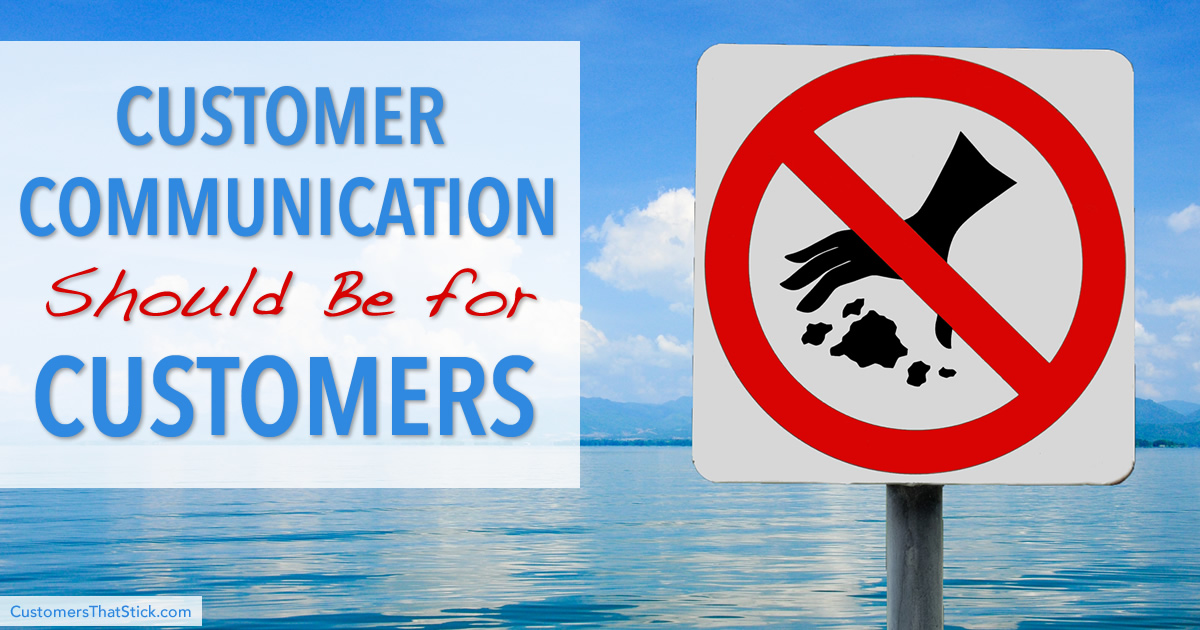
Customer service communication is at it’s core a balancing act. All too often, our spirit of wanting to do everything possible for our customers runs up against the limitations that reality imposes upon us. Whether it be liability exposure, legal restrictions, operational inability, or just pure right and wrong, sometimes we must refuse what customers want and must establish guidelines, or even, if you must, policies to frame our relationship with customers.

Our communication often bears the brunt of this tension. We must tell a customer we understand, when we know they are coming from out of left field. We must try to accommodate challenging requests, while still maintaining practical boundaries.
Too often business leaders ignore this tension.
When we talk about customer service issue resolution, we often discuss the idea of focusing on what we can do for the customer not what we can’t. If fact, I dedicated an entire chapter to this concept in Be Your Customer’s Hero.
The idea is that when trying to resolve a customer issue, the natural tendency is to focus on what we can’t do. “I’m sorry sir. We can’t offer refunds after 14 days.”
The approach that is infinitely more powerful is to focus on what you can do for the customer in that situation — in this case, perhaps an exchange or a store credit.
This tendency to focus on the can’t often manifests itself not just in how team members communicate what they can do but also how they approach how customers are expected to behave as well.
While some rules, particularly in areas like safety and liability, are important, other policies exist simply to establish the parameters of the customer relationship, for instance, not accepting personal checks for payment.
In the latter example, every effort should be made to either eliminate such policies or, at the very least, to make them into something more akin to guidelines, as my colleague John DiJulius says.
The most essential ingredient of any type of customer-facing policy is how we communicate that boundary to the customer. When the boundary must be communicated proactively to the customer, then we should also take into account that telling customers what they can’t do via a sign or an email is an inherently negative customer experience.
Telling customers what they can’t do is an inherently negative experience.
It introduces limits and distrust to the customer experience and often to the first impression as well.
This is exactly the negative message the sign above sends, with a healthy dose of sarcasm layered on top for good measure.
The focus of all customer communication should be the customer, so the first step in communicationg policies and rules is to make every effort to avoid doing so.
Let’s take the example above. Was the leaving of children really such a big problem for the Dallas store? Maybe. They probably have one employee or just the owner on the floor at any time. It is not that hard to imagine parents slipping out to shop at another store and leaving their children without the person on the floor even seeing it happen.
This is legitimately a safety and liability issue, but how it was communicated was simply terrible.

If you must communicate boundaries up front, then it is crucial that this communication is customer focused and customer friendly.
Here are three tips for making sure language used with customers does not send a negative message.
Words like don’t, can’t, and no send powerful signals to customers — the wrong signals.
Always remember that your signage sends a message, as do all of your other forms of customer-facing communication.
Whenever possible, avoid prohibitive messaging, but when you feel you must communicate the matter up front, look for ways to make the communication as positive and customer-centric as possible.
Comments are closed.
© 2011-2025 CTS Service Solutions, LLC.
All rights reserved.
Legal Information | Privacy Policy
How to Cite this Site
Great tips, Adam!
Is it a coincidence that the store in the first picture appears cluttered, disorganized, and unwelcoming? Perhaps that sign is a solid indication of their entire way of doing business.
Pingback: 224: (Tip) 3 CX-Defeating Phrases
Pingback: The Worst Way to Call a Customer